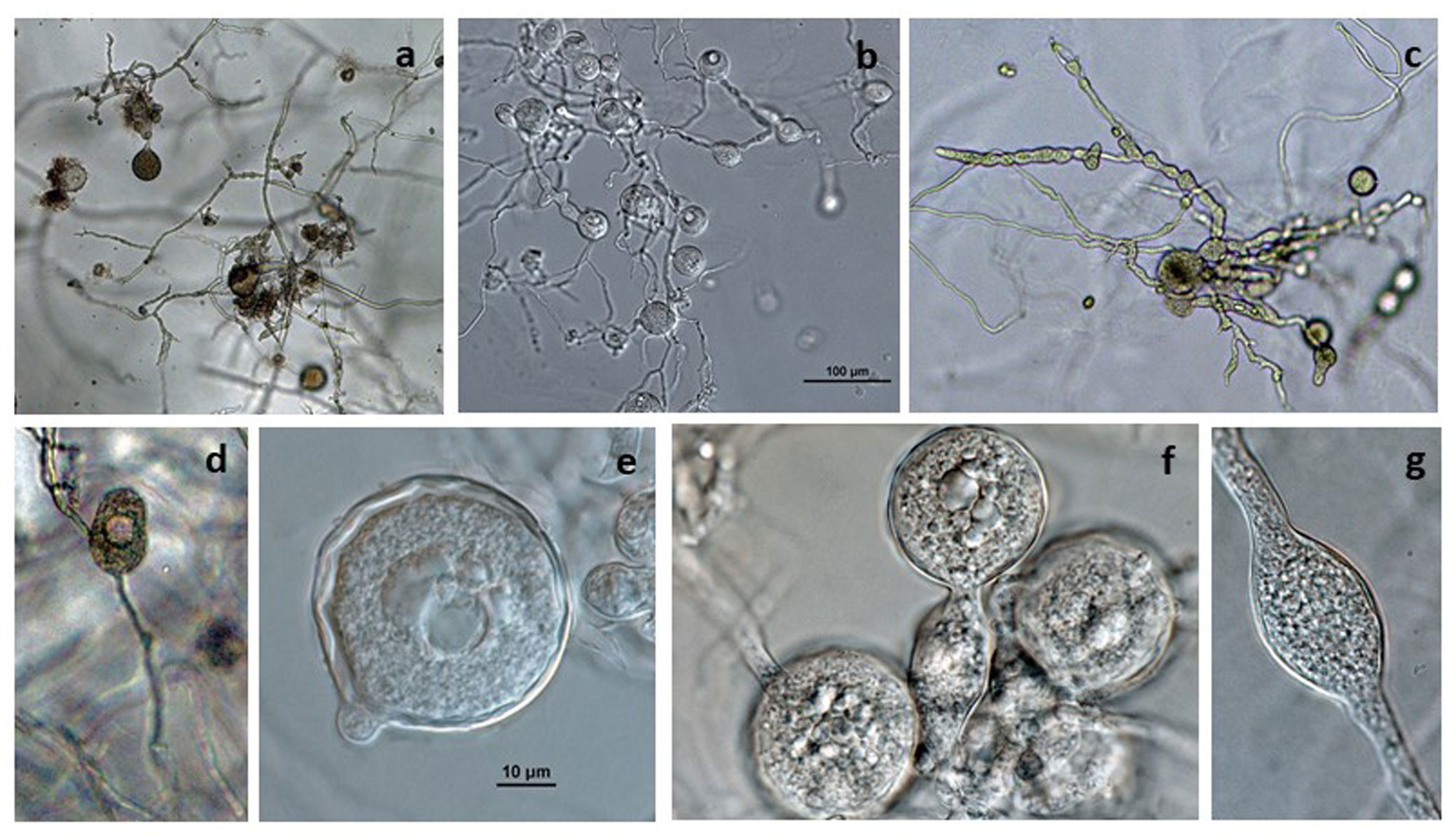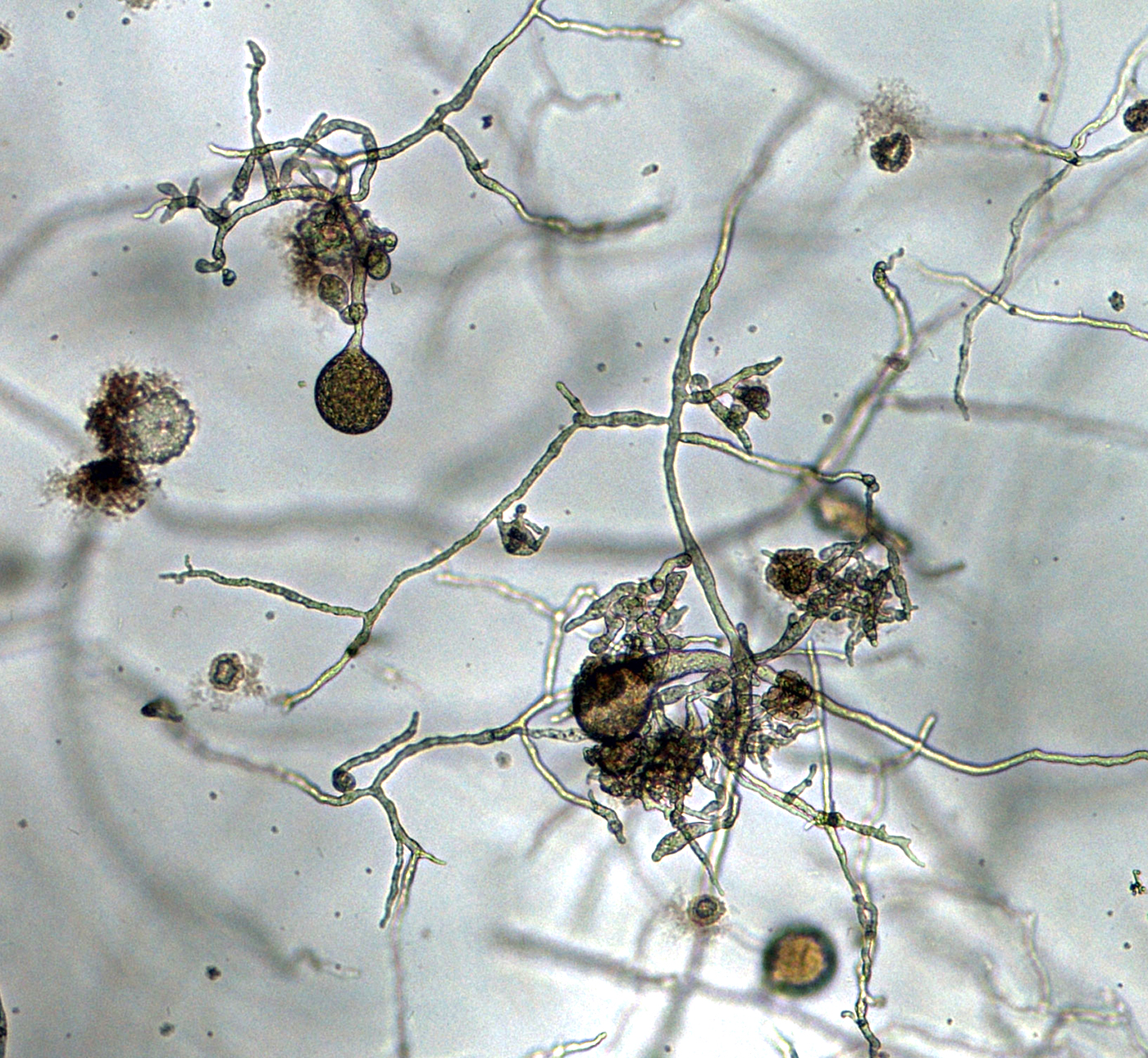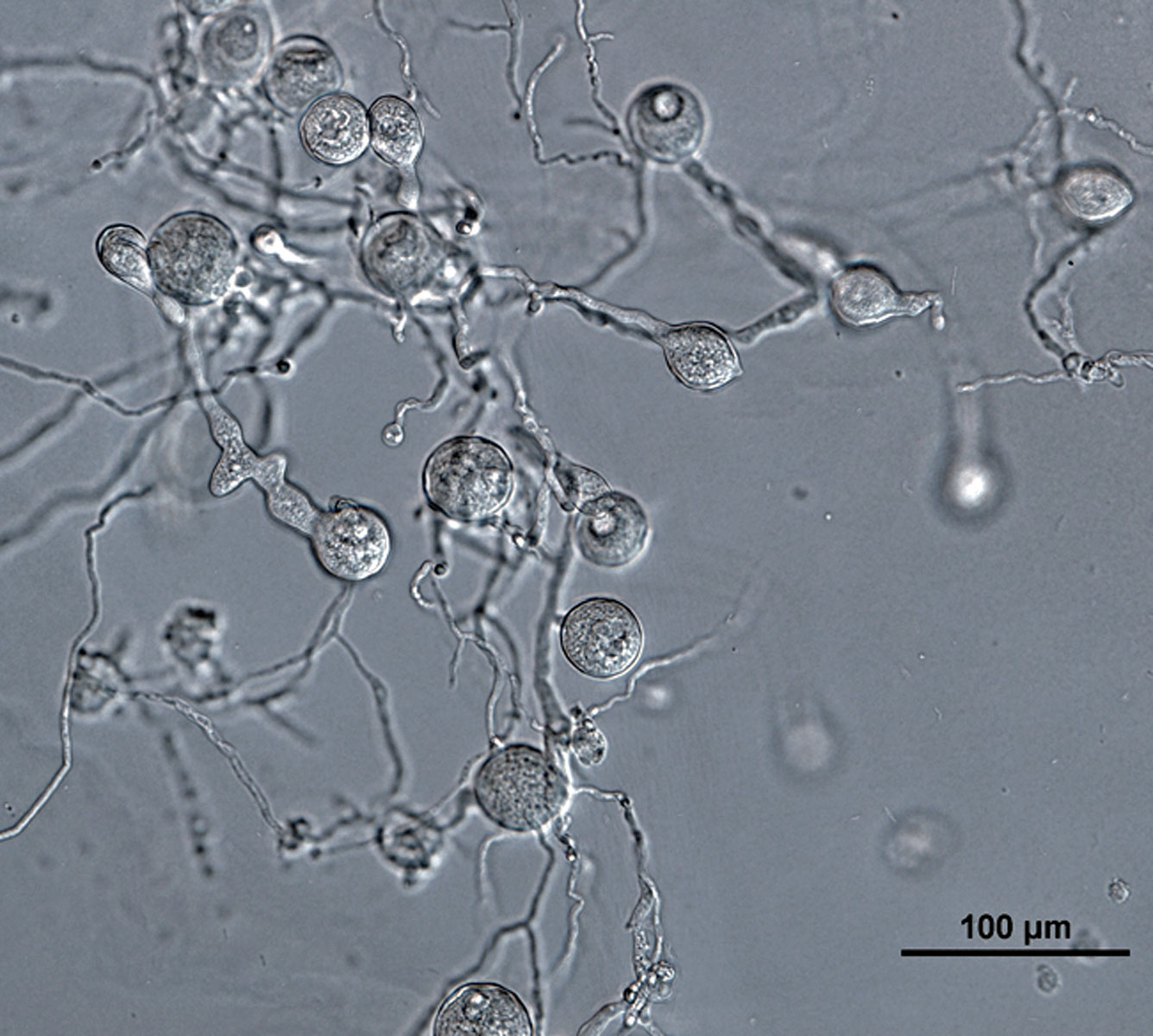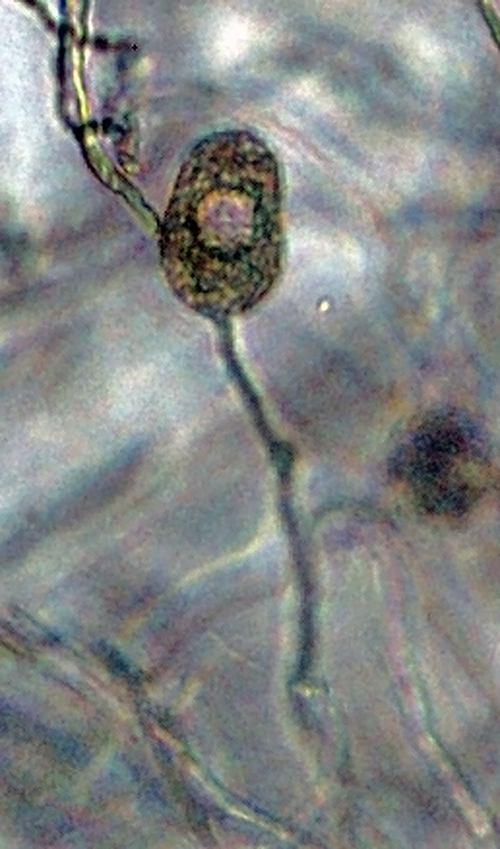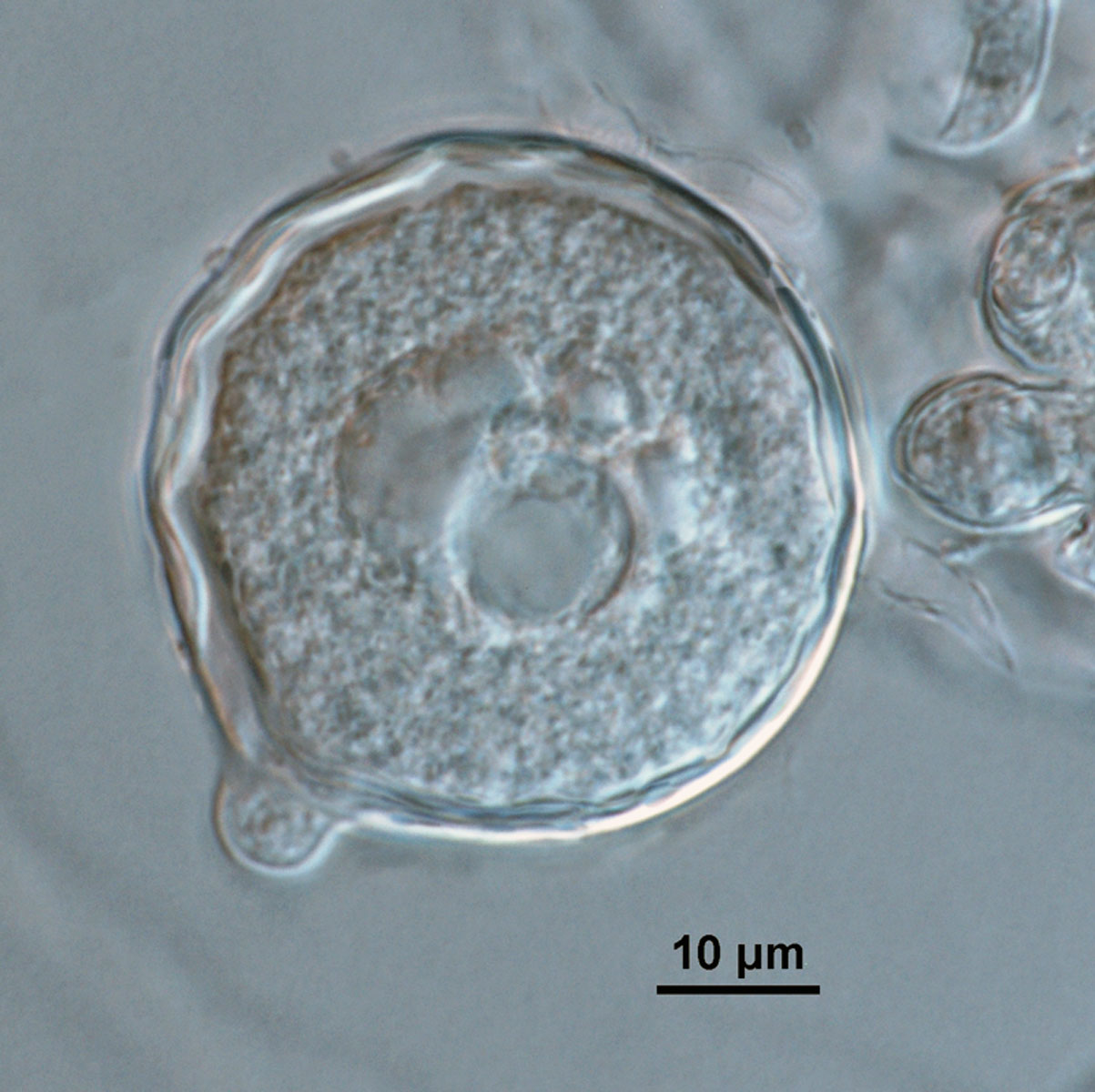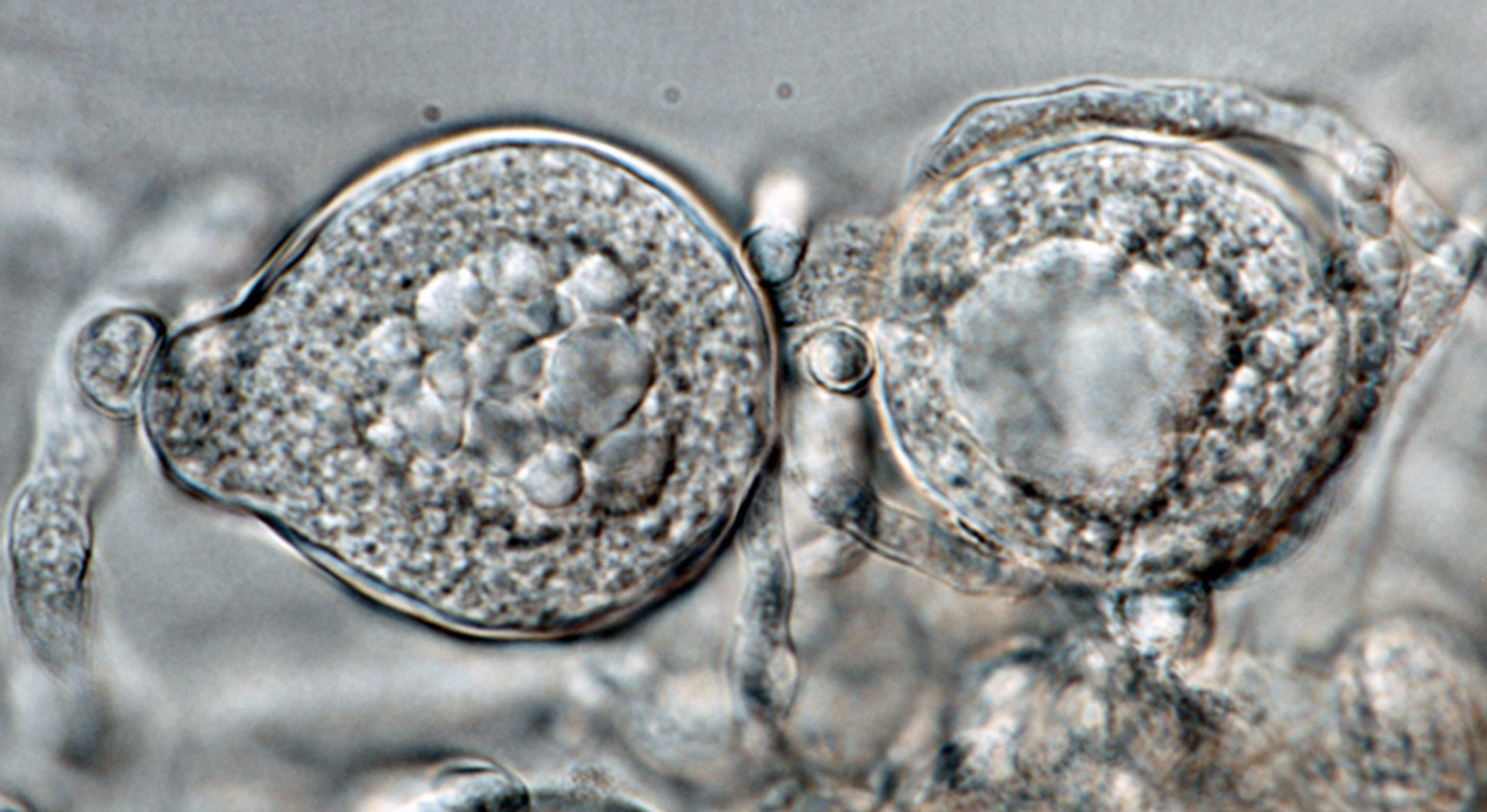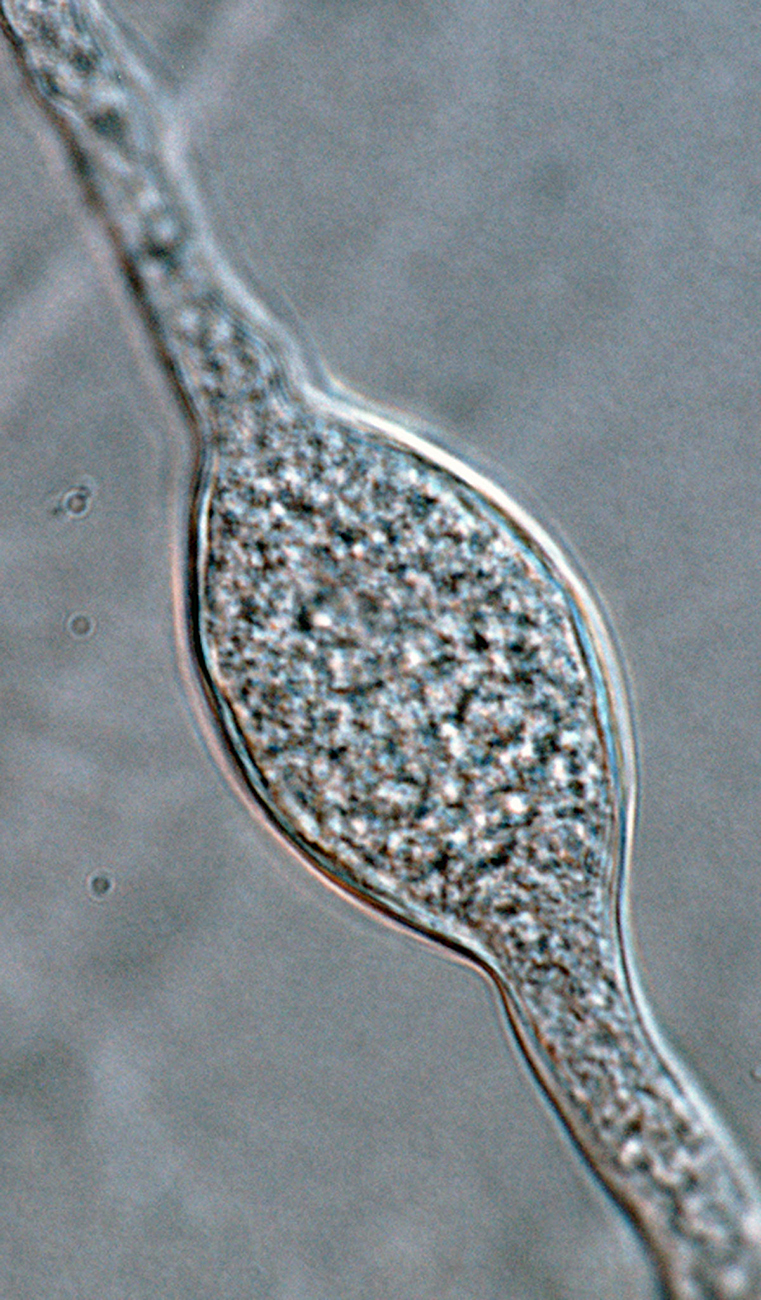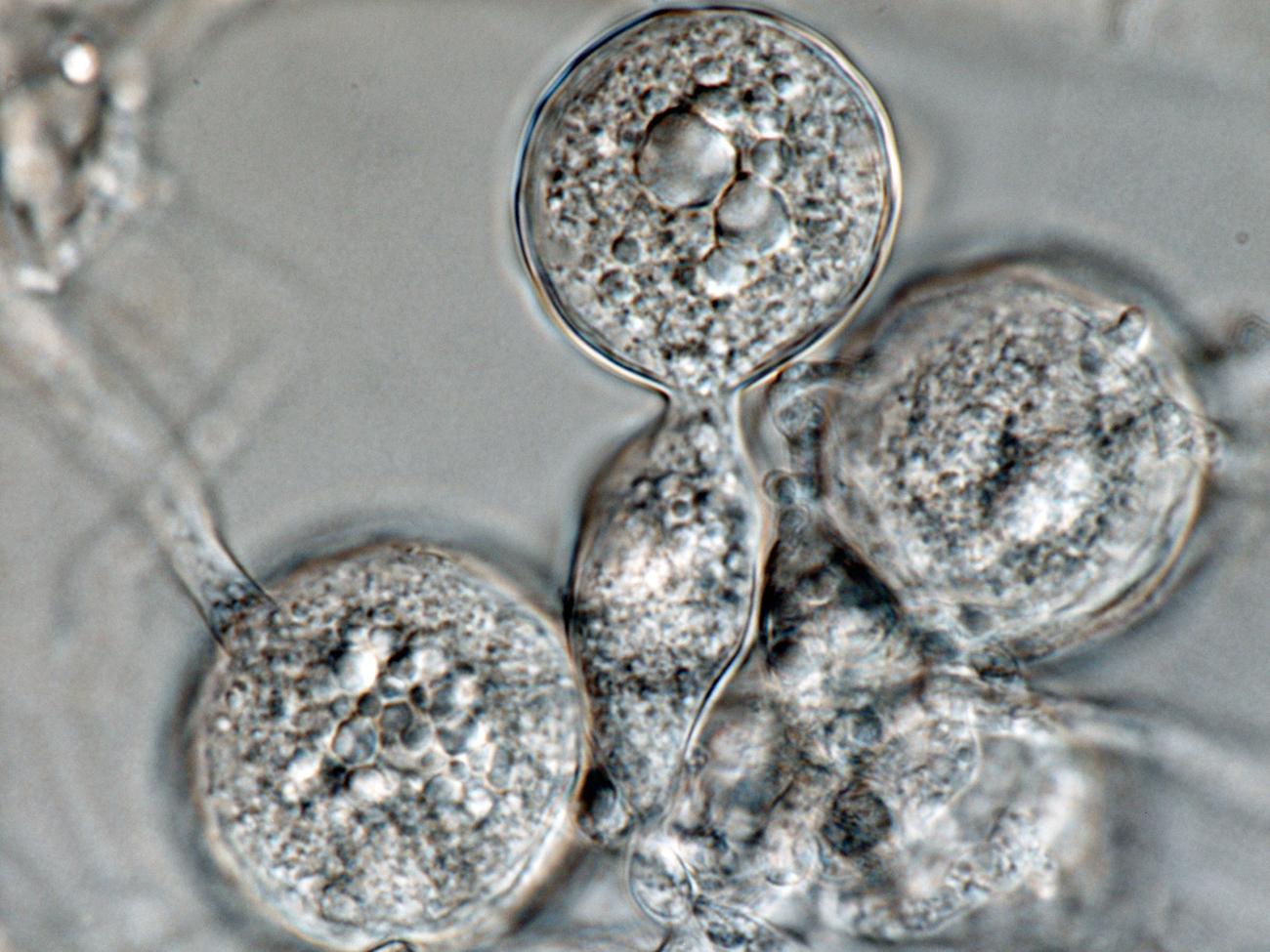Phytophthora gallica
|
Phytophthora spp. in subclade 10b: portion of the seven-loci ML phylogeny featuring the type cultures of 212 described species (by T. Bourret). Notice the position of P. gallica Ex-type CBS 117474 = S&T BL 35. Gloria Abad, USDA S&T.
|
|
Phytophthora spp. in subclade 10b: Morphological Tabular key (PDF) and Tabular key legends (PDF) in IDphy2 KEY SECTION. Notice the data of P. gallica Ex-type CBS 117474 = S&T BL 35. Gloria Abad, USDA S&T.
|
|
Phytophthora gallica (CPHST BL 35) colonies of the ex-type grown for 7 days on (a) V8® Agar, (b) potato dextrose agar, and (c) malt extract agar; photo by Krysta Jennings and Leandra Knight, USDA-APHIS-PPQ |
|
Phytophthora gallica (CPHST BL 35) asexual phase of the ex-type producing chlamydospores and hyphal swellings, and (d) nonpapillate persistent sporangium; photos by Gloria Abad USDA-APHIS-PPQ. |
|
Phytophthora gallica (CPHST BL 35) asexual phase of the ex-type producing chlamydospores and hyphal swellings; photo by Gloria Abad USDA-APHIS-PPQ. |
|
Phytophthora gallica (CPHST BL 35) asexual phase of the ex-type producing chlamydospores and hyphal swellings; photo by Gloria Abad USDA-APHIS-PPQ. |
|
Phytophthora gallica (CPHST BL 35) asexual phase of the ex-type producing chlamydospores and hyphal swellings; photo by Gloria Abad USDA-APHIS-PPQ. |
|
Phytophthora gallica (CPHST BL 35) asexual phase of the ex-type producing a nonpapillate persistent sporangium; photo by Gloria Abad USDA-APHIS-PPQ. |
|
Phytophthora gallica (CPHST BL 35) asexual phase of the ex-type: chlamydospore; photo by Gloria Abad USDA-APHIS-PPQ. |
|
Phytophthora gallica (CPHST BL 35) asexual phase of the ex-type producing chlamydospores; photo by Gloria Abad USDA-APHIS-PPQ. |
|
Phytophthora gallica (CPHST BL 35) asexual phase of the ex-type producing a hyphal swelling; photo by Gloria Abad USDA-APHIS-PPQ. |
|
Phytophthora gallica (CPHST BL 35) asexual phase of the ex-type producing chlamydospores; photo by Gloria Abad USDA-APHIS-PPQ. |
Name and publication
Phytophthora gallica T. Jung & Nechw. (2008)
Jung T and Nechwatal J. 2008. Phytophthora gallica sp. nov., a new species from rhizosphere soil of declining oak and reed stands in France and Germany. Mycol. Res. 112: 1195–1205 (pg. 1200).
Corresponding author: Thomas Jung competence@tree-diseases.com
Nomenclature
from Jung and Nechwatal (2008)
Mycobank
Etymology
refers to the origin of isolate GAL 1 in France
Typification
Type: FRANCE, Forêt d’ Illwald, from oak rhizosphere soil (Quercus robur), Apr 1998, T. Jung, PRC-Ill 5/1 (Phytophthora Research and Consultancy, Brannenburg, Germany)
Isotype: UKN-Ill 5/1 (University of Konstanz, Germany, Phytopathology). Previously known informally as Phytophthora taxon G.
Ex-type: CBS 111474 and PRC-GAL 1 (Live cutures) GAL1, MM497405
Sequences for ex-type in original manuscript: GAL-1 = ITS rDNA DQ286726, CoxII EF192238
Ex-type in other collections
(ET) CBS 117474, NRRL 64377, PRC-GAL 1, WPC P16826, S&T BL 35 (Abad), 50A1 (Hong), gs/11917, MM497405
Molecular identification
Voucher sequences for barcoding genes (ITS rDNA and COI) of the Ex-type (see Molecular protocols page)
Phytophthora gallica isolate CPHST BL 35 (= P16826 WPC) = ITS rDNA MG865497, COI MH136893
Voucher sequences for Molecular Toolbox with seven genes (ITS, β-tub, COI, EF1α, HSP90, L10, and YPT1
(see Molecular protocols page) (In Progress)
Voucher sequences for Metabarcoding High-throughput Sequencing (HTS) Technologies [Molecular Operational Taxonomic Unit (MOTU)]
(see Molecular protocols page) (In Progress)
Sequences with multiple genes for ex-type in other sources
- NCBI: Phytophthora gallica CPHST BL 35
- NCBI: Phytophthora gallica P16826
- NCBI: Phytophthora gallica GAL 1
- EPPO-Q-bank: Phytophthora gallica CBS 111474
- BOLDSYSTEMS: Phytophthora gallica (barcoding COI & ITS)
Position in multigenic phylogeny with 7 genes (ITS, β-tub, COI, EF1α, HSP90, L10, and YPT1)
Clade clade:
a taxonomic group of organisms classified together on the basis of homologous features traced to a common ancestor
10b
Morphological identification
adapted from Jung and Nechwatal (2008)
Colonies and cardinal temperatures
Colony colony:
assemblage of hyphae which usually develops form a single source and grows in a coordinated way
morphology after 7 days on V8-A, PDA, and MEA with no distinct pattern, in V-8 and MEA with light chrysanthemum pattern. Minimum growth temperature 5°C, optimum 20°C, and maximum 30°C.
Asexual phase
SporangiaSporangia:
sac within which zoospores form, especially when water is cooled to about 10°C below ambient temperature; in solid substrates, sporangia usually germinate by germ tubes
nonpapillatenonpapillate:
pertaining to the production of a non-distinct, or inconspicuous, papilla at the distal end of the sporangium (cf. papillate and semipapillate)
; persistentpersistent:
pertaining to sporangia that remain attached to the sporangiophore and do not separate or detach easily (cf. caducous)
; obpyriformobpyriform:
inversely pear-shaped, i.e. with the widest part at the point of attachment (cf. pyriform)
, ovoidovoid:
egg-shaped, with the widest part at the base of the sporangium and the narrow part at the apex
, peanut-like, or limoniform (30–100 x 19–47 µm); with internal extended or nested proliferationnested proliferation:
a type of internal proliferation where a new sporangium develops successively inside the old sporangium after it has emptied
; originated on unbranched or lax sympodiasympodia:
a type of sporangiophore which appears simple, but where each successive sporangium develops on a branch behind and to one side of the previous apex, where growth has already ceased
sporangiophores. Hyphal swellings globoseglobose:
having a rounded form resembling that of a sphere
, subglobose, irregular, and catenulated. ChlamydosporesChlamydospores:
an asexual spore with a thickened inner wall that is delimited from the mycelium by a septum; may be terminal or intercalary, and survives for long periods in soil
globoseglobose:
having a rounded form resembling that of a sphere
(25–63 µm), elongated, pyriformpyriform:
pear-shaped, with the narrowest part at the base (cf. obpyriform)
, club-shaped and irregular, terminal, or lateral.
Sexual phase
Sterile.
Most typical characters
Phytophthora gallica is characterized by the presence of hyphal swellings globose, subglobose, irregular, and catenulated; the globose, elongated, pyriformpyriform:
pear-shaped, with the narrowest part at the base (cf. obpyriform)
, club-shaped chlamydospores; and the sterile sexual phase.
Additional specimen(s) evaluated
Phytophthora gallica ex-type CPHST BL 35, duplicate of P16826 (World Phytophthora Collection), which is a duplicate of the ex-type CBS 111474
Hosts and distribution
Distribution: Europe, North America (USA: OR)
Substrate: soil
Host: associated with diverse hosts
Retrieved January 30, 2018 from U.S. National Fungus Collections Nomenclature Database.
Additional info:
Host: Quercus robur
Substrate: rhizosphere
Additional references and links
- SMML USDA-ARS: Phytophthora gallica
- EPPO Global Database: Phytophthora gallica
- Forest Phytophthoras of the world: Phytophthora gallica
- CABI Digital Library: Phytophthora gallica
- Encyclopedia of Life (EOL): Phytophthora gallica
- Index Fungorum (IF): Phytophthora gallica
- Google All Phytophthora gallica
- Google Images Phytophthora gallica
- Google Scholar Phytophthora gallica
Fact sheet author
Z. Gloria Abad, Ph.D., USDA-APHIS-PPQ-S&T Plant Pathogen Confirmatory Diagnostics Laboratory (PPCDL), United States of America.


